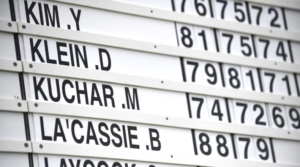 The Fiji International is fast approaching and with tickets on sale for the tournament to be held from 6-9 October at Natadola Bay Championship Golf Course here is our 101 guide to golf.
The Fiji International is fast approaching and with tickets on sale for the tournament to be held from 6-9 October at Natadola Bay Championship Golf Course here is our 101 guide to golf.
Whether you are a regular golfer or planning to come to the Fiji International for the very first time, this guide will arm you with all the golf information you need to ensure you are a golf expert when you hit the fairways to watch the Pros compete at the Fiji International.
What is stroke play?
The Fiji International is a stroke play tournament, this means that it uses a scoring system that involves counting the total number of strokes taken on each hole during a given round, or series of rounds. The winner is the player who has taken the fewest number of strokes over the course of the round, or rounds. Most professional tournaments are played using the stroke play scoring system.
Rounds
A professional golf tournament consists of four rounds. Each round is made up of 18 holes, there are 18 holes on the golf course at Natadola Bay Championship Golf Course.
Scoring
Players record the number of strokes taken at each hole and total them up at the end of a given round, or rounds. The player with the lowest total is the winner.
Scores may be reported in relation to par for easy comparison with other golfers’ scores. For example, a player whose score is three strokes over par after a given hole would appear as “+3” on the scoreboard.
Should there be a tie for first place, it may be desirable to determine an outright winner via a playoff (see below).
Cut
Most tournaments enforce a cut, which in a typical 72-hole tournament like the Fiji International is done after 36 holes and eliminates some players from the tournament. The number of players who “make the cut” depends on the tournament rules – in a typical PGA Tour event the top 60 professionals (plus ties) after 36 holes. Any player who turns in a score higher than the “cut line” will “miss the cut” and take no further part in the tournament.
Playoff
One of the most common methods for settling ties is by means of a playoff, whereby those players who have tied for the lead at the end of the four rounds of the tournament, replay a set number of holes. If still tied after those holes then further sudden death holes may also be played until a winner emerges.
SCORING (STROKE PLAY) IN GOLF
The concept of recording score in golf simpler than it may seem.
Every time you attempt to hit a ball, it is called a “stroke,” and your score goes up by one.
Unlike most other sports, in golf you want to keep your score as low as possible.
This means the player with the lowest number of strokes at the end of the day wins.
Although taking down the total number of shot attempts seems simple enough, there is some gray area that every player needs to know.
- As stated, a stroke is a shot attempt, not a shot in itself. This means that when you attempt a swing to hit the ball, and you completely miss the ball, it still counts as a stroke.
- Practice swings do not count as a stroke.
- If you touch the ball that you are playing with, with your club, that is also a stroke.
Par is the total number of strokes a player should need to put the ball in the hole including the tee shot.
In most cases, this assumes that the “player” is someone of high ability, most likely a top amateur or professional.
A “par 4” means the course expects a professional to hit four shots to get the ball in the hole.
Most 18 hole courses have par set at 72 strokes.
This usually includes four par 5’s, four par 3’s, and 10 par 4’s.
If you shoot 72, meaning you took 72 shots that day, you have “shot par.” If a Tour player shoots a 62, he is said to have “shot 10 strokes under par.” An 80 would be 8 shots over par.
